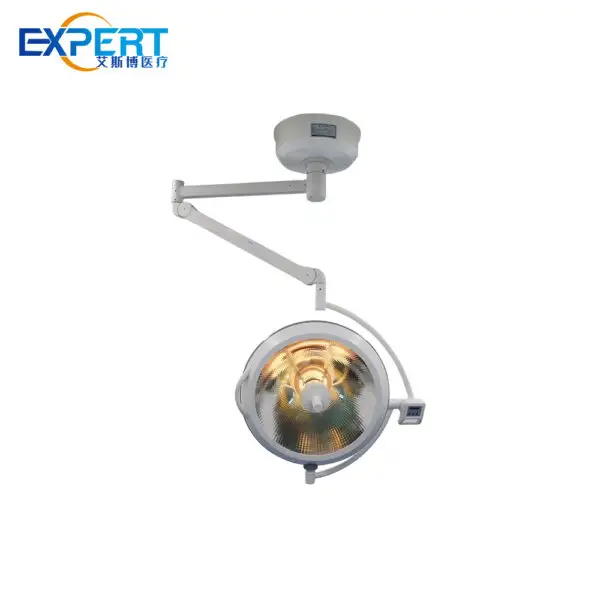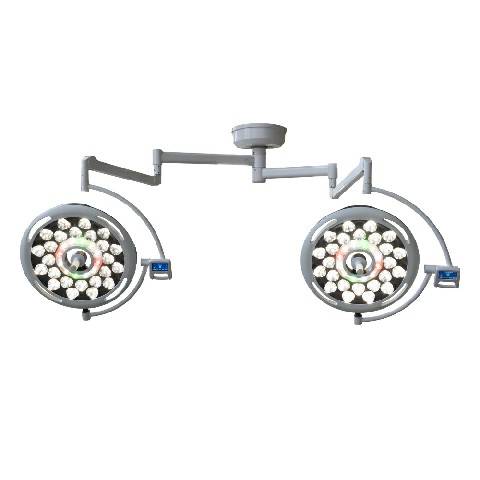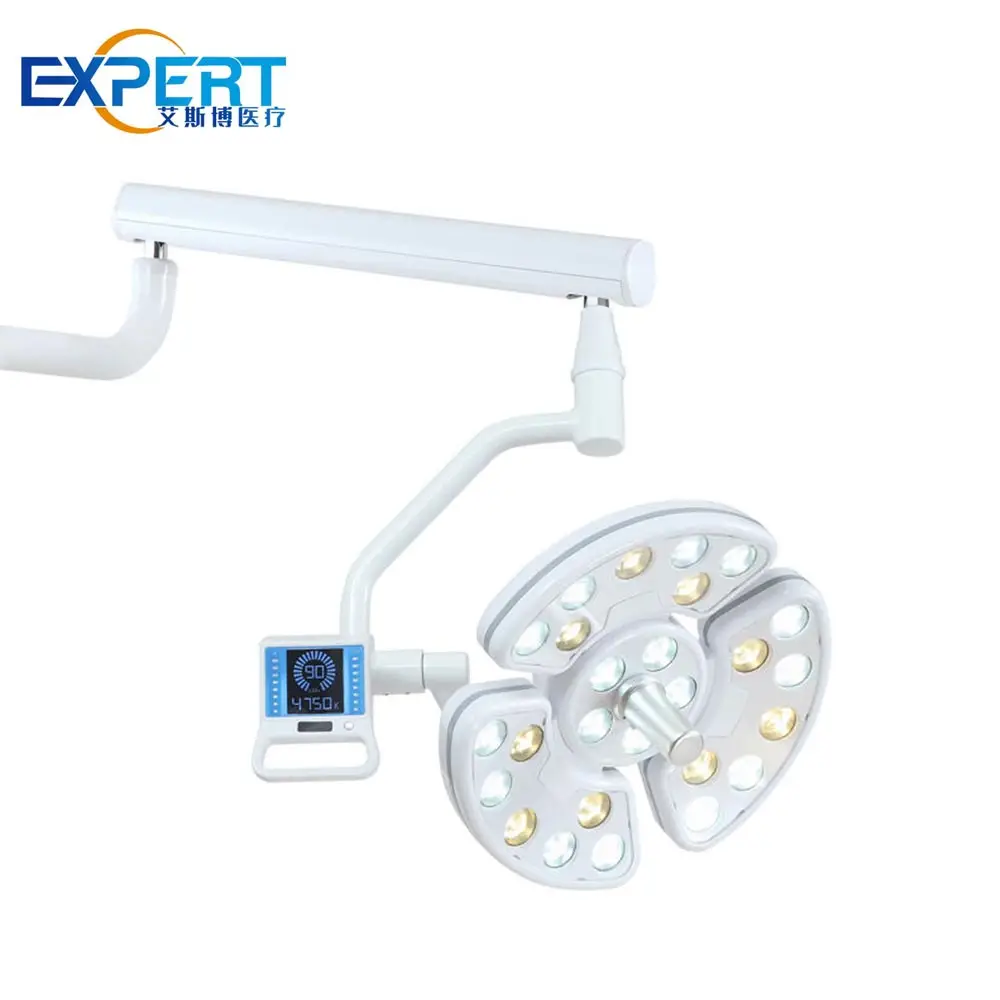Indirizzo
304 Il cardinale nord S.
Dorchester Center, MA 02124
Ore di lavoro
Dal lunedì al venerdì: 7:00 - 19:00
Fine settimana: 10:00 - 17:00
Indirizzo
304 Il cardinale nord S.
Dorchester Center, MA 02124
Ore di lavoro
Dal lunedì al venerdì: 7:00 - 19:00
Fine settimana: 10:00 - 17:00

Questa guida completa ti aiuterà a orientarti nel processo di scelta dell'illuminazione chirurgica ideale per le tue sale operatorie.
Benvenuti nel mio blog!
Prima di immergerci nei contenuti, mi piacerebbe che ti unissi a me sulle mie piattaforme social, dove condivido altre intuizioni, interagisco con la community e pubblico aggiornamenti. Ecco come puoi metterti in contatto con me:
Facebook:https://www.facebook.com/profile.php?id=100071234835011
LinkedIn:https://www.linkedin.com/company/74943205/admin/dashboard/
YouTube:https://www.youtube.com/@shandongexpertmedicalequip4695
TikTok:https://www.tiktok.com/@expertmedical
Ora, iniziamo il nostro viaggio insieme. Spero che tu trovi il contenuto qui perspicace, coinvolgente e prezioso.
Nel mondo intricato e rischioso della chirurgia, precisione, chiarezza e concentrazione sono fondamentali. La giusta illuminazione chirurgica svolge un ruolo fondamentale nel garantire questi fattori, influenzando direttamente il successo delle procedure chirurgiche e i risultati per i pazienti. L'illuminazione chirurgica illumina il campo operatorio, consentendo ai chirurghi di vedere chiaramente tessuti e organi, di distinguere tra sottili variazioni di colore e di mantenere la concentrazione durante lunghe procedure. Data la sua importanza, la scelta della migliore illuminazione chirurgica per la tua struttura richiede un'attenta considerazione di vari fattori, dall'intensità della luce all'efficienza energetica. Questa guida completa ti aiuterà a orientarti nel processo di scelta dell'illuminazione chirurgica ideale per le tue sale operatorie.

L'illuminazione chirurgica si riferisce a sistemi di illuminazione specializzati utilizzati nelle sale operatorie per fornire un'illuminazione brillante e focalizzata sul sito chirurgico. A differenza dell'illuminazione generale, le luci chirurgiche sono progettate per ridurre al minimo le ombre, ridurre l'abbagliamento e offrire una qualità della luce costante che non affatica gli occhi. Queste luci sono spesso montate sul soffitto, sulla parete o come unità mobili e possono essere dotate di più teste luminose per garantire una copertura completa.
Caratteristiche principali dell'illuminazione chirurgica:
L'importanza dell'illuminazione chirurgica non può essere sopravvalutata. Un'illuminazione inadeguata può portare a errori, affaticamento e compromettere la sicurezza del paziente. Un'illuminazione chirurgica adeguata garantisce che i chirurghi possano eseguire le procedure con precisione, riducendo il rischio di complicazioni. Inoltre, una buona illuminazione aiuta a mantenere la concentrazione durante le operazioni lunghe, contribuendo a risultati migliori.
Vantaggi dell'illuminazione chirurgica di alta qualità:









Uno dei fattori più importanti da considerare quando si seleziona l'illuminazione chirurgica è l'intensità della luce, misurata in lux. L'intensità della luce ideale varia a seconda del tipo di intervento chirurgico eseguito. Ad esempio, gli interventi chirurgici su cavità profonde richiedono un'intensità della luce maggiore, mentre le procedure a livello superficiale potrebbero richiederne una minore. La capacità di regolare l'intensità della luce è fondamentale per soddisfare diverse esigenze chirurgiche e garantire una visibilità ottimale senza causare abbagliamento.
Considerazioni sull'intensità della luce:
L'indice di resa cromatica (CRI) è una misura di quanto accuratamente una sorgente luminosa rappresenti i colori. In chirurgia, dove distinguere i tessuti è fondamentale, un CRI elevato è essenziale. Sono consigliate lampade chirurgiche con un CRI di 90 o superiore, poiché consentono ai chirurghi di vedere i colori reali, rendendo più facile identificare diversi tipi di tessuto e diagnosticare le condizioni in modo accurato.
Considerazioni CRI:
La gestione delle ombre è un altro aspetto cruciale dell'illuminazione chirurgica. Le ombre possono oscurare il sito chirurgico, rendendo difficile per i chirurghi vedere cosa stanno facendo. Le moderne luci chirurgiche sono progettate con più teste luminose e fasci sovrapposti per ridurre al minimo le ombre, assicurando che il campo chirurgico sia illuminato in modo uniforme.
Funzionalità di gestione delle ombre:
| Caratteristica | Illuminazione chirurgica a LED | Illuminazione chirurgica alogena | Illuminazione chirurgica allo xeno |
|---|---|---|---|
| Intensità luminosa (Lux) | 160,000 – 200,000 | 120,000 – 150,000 | 140,000 – 180,000 |
| Indice di resa cromatica (CRI) | 95-98 | 85-90 | 90-95 |
| Riduzione delle ombre | Ottimo, con più raggi | Buona, fonte unica | Buona, moderata riduzione delle ombre |
| Emissione di calore | Calore basso e minimo | Calore elevato e significativo | Moderato, un po' caldo |
| Efficienza energetica | Molto alto | Basso | Moderare |
| Durata | 40.000 – 50.000 ore | 1.000 – 2.000 ore | 5.000 – 10.000 ore |
| Il migliore per | Chirurgia generale, interventi lunghi | Strutture economiche | Interventi chirurgici specializzati |

Le luci chirurgiche a LED sono diventate lo standard nelle moderne sale operatorie grazie ai loro numerosi vantaggi rispetto alle tecnologie di illuminazione tradizionali. Le luci a LED sono altamente efficienti dal punto di vista energetico, hanno una lunga durata e producono calore minimo, il che le rende comode sia per i pazienti che per il personale chirurgico. Inoltre, le luci a LED offrono una qualità della luce superiore con CRI elevato e temperature di colore regolabili, offrendo flessibilità per diverse esigenze chirurgiche.
Vantaggi dell'illuminazione chirurgica a LED:
I moderni sistemi di illuminazione chirurgica spesso hanno la possibilità di integrarsi con i sistemi digitali della sala operatoria. Questa integrazione consente il controllo centralizzato di illuminazione, telecamere e altre apparecchiature, semplificando le operazioni e migliorando l'efficienza. Alcuni sistemi offrono persino funzionalità come scenari di illuminazione preimpostati per diversi tipi di interventi chirurgici, migliorando ulteriormente la praticità e la precisione.
Funzionalità di integrazione digitale:
Scegliere la migliore illuminazione chirurgica per la tua struttura è una decisione critica che può avere un impatto significativo sul successo delle procedure chirurgiche e sui risultati per i pazienti. Considerando fattori come intensità della luce, resa cromatica, gestione delle ombre e funzionalità avanzate come tecnologia LED e integrazione digitale, puoi selezionare un sistema di illuminazione che soddisfi le esigenze specifiche delle tue sale operatorie. Investire in un'illuminazione chirurgica di alta qualità non solo migliora la precisione e la sicurezza degli interventi chirurgici, ma contribuisce anche all'efficienza e al comfort complessivi del tuo team chirurgico.
Qual è l'importanza della resa cromatica nell'illuminazione chirurgica?
La resa cromatica è fondamentale nell'illuminazione chirurgica perché assicura una rappresentazione accurata del colore, consentendo ai chirurghi di distinguere tra tessuti diversi e prendere decisioni precise durante l'intervento. Per le luci chirurgiche si raccomanda un CRI elevato (90 o superiore).
Come si confronta l'illuminazione chirurgica a LED con quella alogena tradizionale?
L'illuminazione chirurgica a LED offre diversi vantaggi rispetto all'illuminazione alogena, tra cui maggiore efficienza energetica, durata di vita più lunga, produzione di calore minima e migliore qualità della luce. Questi vantaggi rendono l'illuminazione a LED la scelta preferita per le moderne sale operatorie.
Quali sono le caratteristiche principali da ricercare nell'illuminazione chirurgica?
Le caratteristiche principali da considerare includono l'intensità luminosa (misurata in lux), l'indice di resa cromatica (CRI), la gestione delle ombre, l'efficienza energetica e opzioni avanzate come la tecnologia LED e l'integrazione digitale.
Perché la gestione delle ombre è importante nell'illuminazione chirurgica?
La gestione delle ombre è importante perché le ombre possono oscurare il sito chirurgico, rendendo difficile per i chirurghi vedere chiaramente. Le luci chirurgiche di alta qualità utilizzano più teste luminose e fasci sovrapposti per ridurre al minimo le ombre e garantire un'illuminazione uniforme.
In che modo l'integrazione digitale migliora l'illuminazione chirurgica?
L'integrazione digitale consente di controllare le luci chirurgiche in modo centralizzato insieme ad altre apparecchiature della sala operatoria, semplificando le operazioni e migliorando l'efficienza. Caratteristiche come le modalità di illuminazione preimpostate e l'integrazione con i sistemi di imaging migliorano ulteriormente la funzionalità e la praticità del sistema di illuminazione.